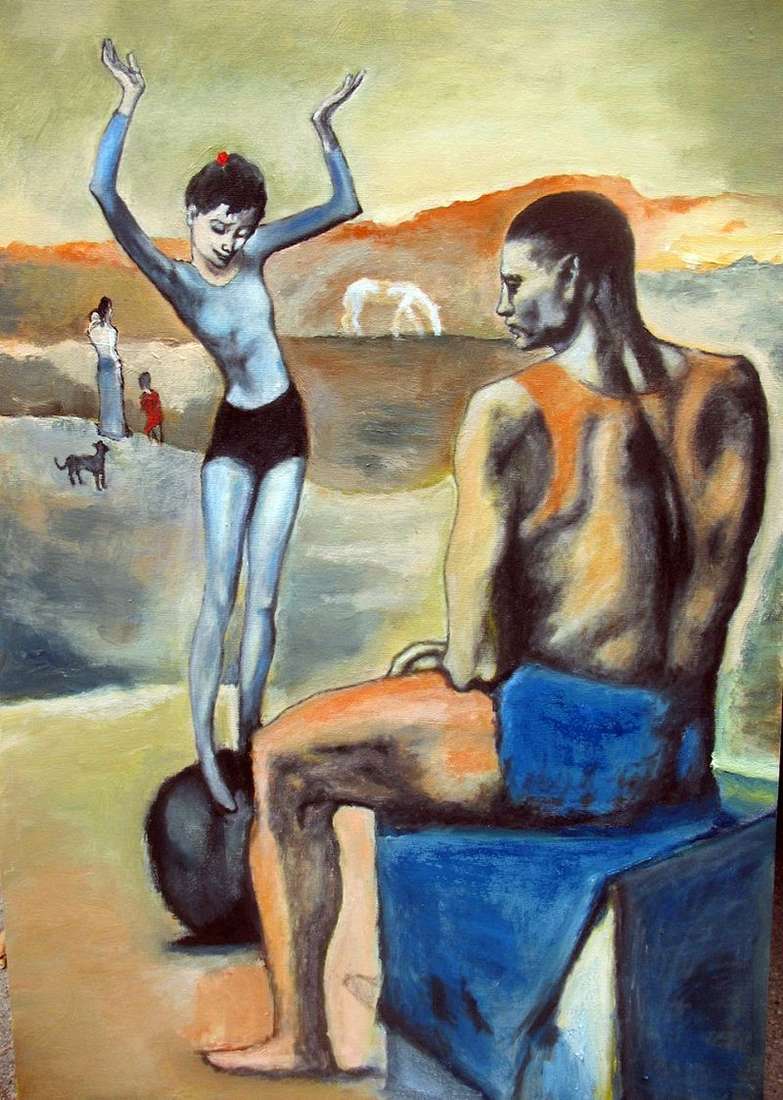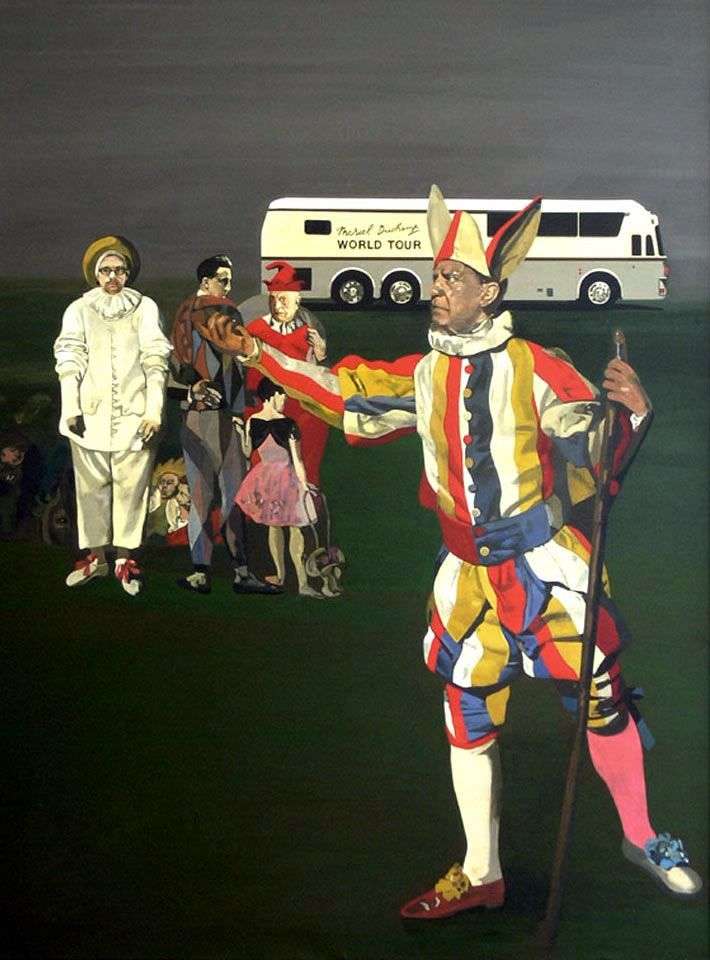
The painting depicts a wandering troupe of acrobats. Almost the entire canvas depicts two: a fragile gymnast rehearses a circus number, balancing on a ball, and a powerful athlete sits nearby, resting. The picture is filled with inner drama, which is the basis of the composition of the picture, and is built on a comparison of contrasts.
The landscape depicted in the picture is a dull, sun-scorched hilly plain, a country road stretched along it, where the traveling circus carriage stopped. In the background, the picture shows a random passerby with a child, and a grazing white horse.
The dull background contrasts with the cheerful craft of artists working among the noisy cheerful crowd of spectators. The ball and the cube standing on the ground – circus properties – are also opposites. The contrast of movement and stillness is played up.
The girl sways gracefully, keeping her balance, the athlete sits frozen like a monolith. It practically merged into one with its pedestal, personifying immobility and constancy. The red flower in the gymnast’s hair is a bright spot among the pastel bluish and pink flowers of the picture. The painting was written in 1905, and is one of the most significant works of the “pink” period in the works of Picasso.
 The girl on the ball by Pablo Picasso
The girl on the ball by Pablo Picasso Family of Comedians by Pablo Picasso
Family of Comedians by Pablo Picasso Boy with a dog by Pablo Picasso
Boy with a dog by Pablo Picasso Acrobat by Pablo Picasso
Acrobat by Pablo Picasso Boy with a pipe by Pablo Picasso
Boy with a pipe by Pablo Picasso Girl Before a Mirror by Pablo Picasso
Girl Before a Mirror by Pablo Picasso Family of an acrobat with a monkey by Pablo Picasso
Family of an acrobat with a monkey by Pablo Picasso Comedian with the ball by Peter Blake
Comedian with the ball by Peter Blake